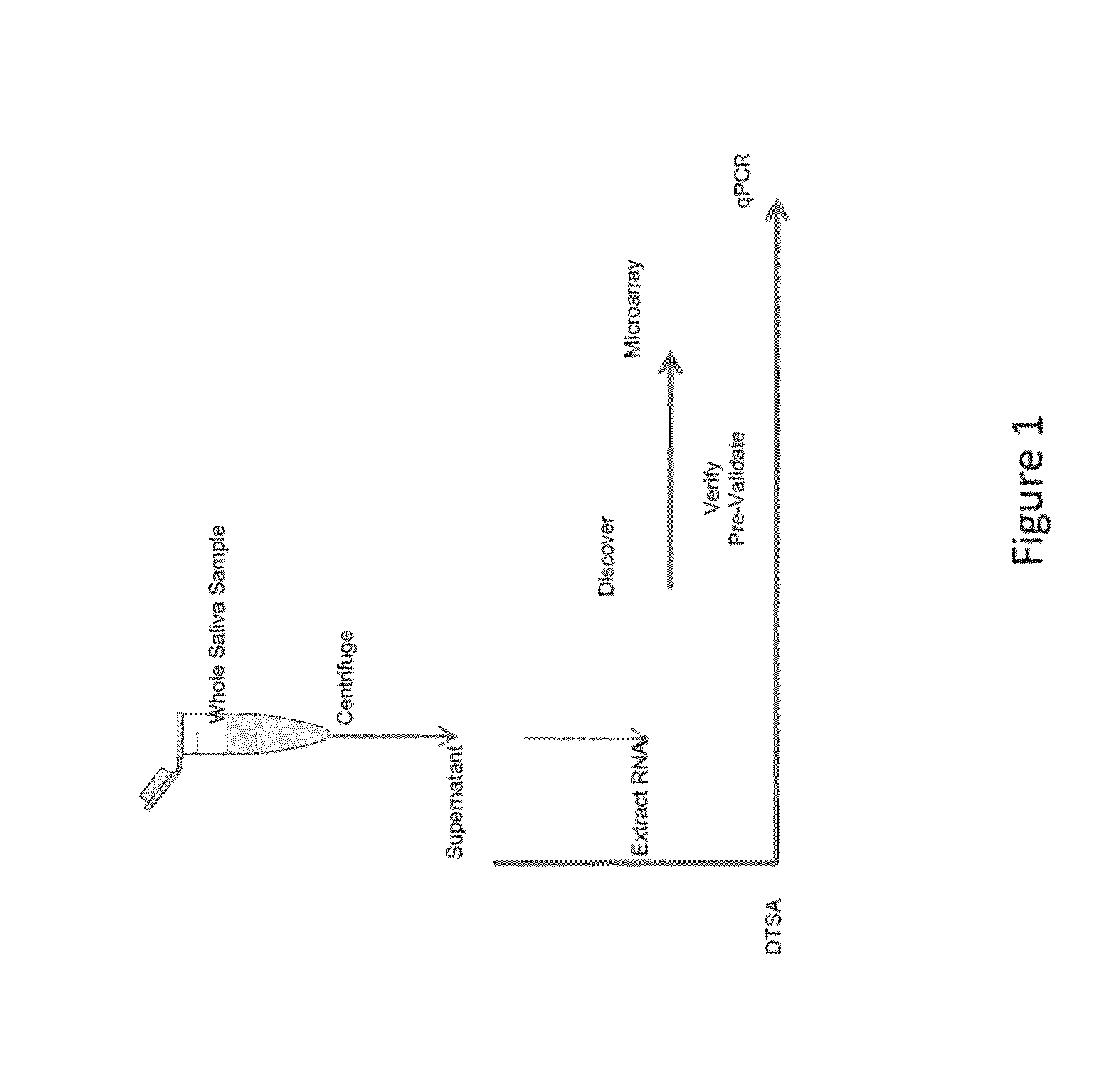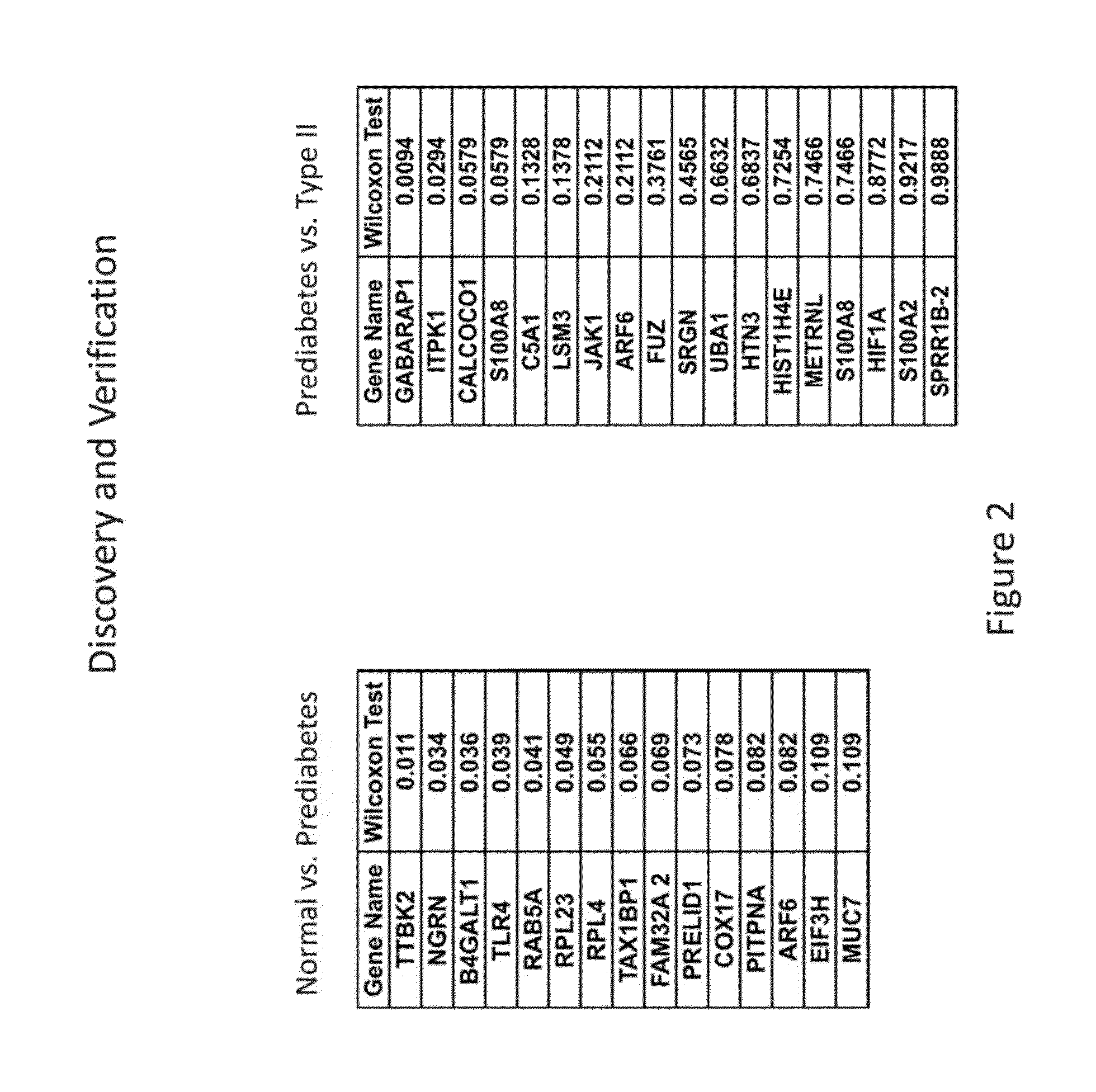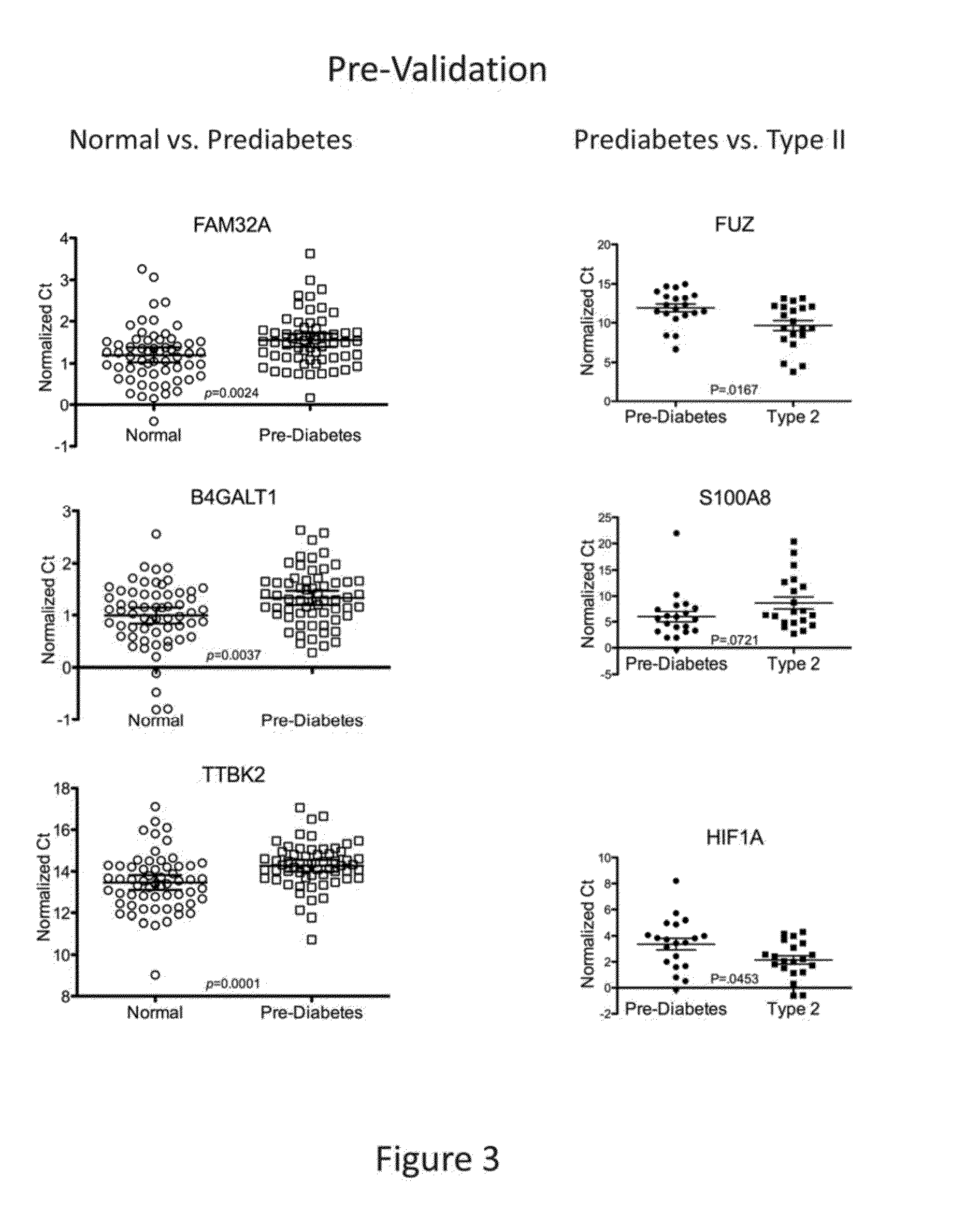Salivary biomarkers for prediabetes and type 2 diabetes
a biomarker and prediabetes technology, applied in combinational chemistry, biochemistry apparatus and processes, library screening, etc., can solve the problems of undiagnosed, reduced productivity, and increased medical costs
- Summary
- Abstract
- Description
- Claims
- Application Information
AI Technical Summary
Benefits of technology
Problems solved by technology
Method used
Image
Examples
experimental examples
[0107]The invention is further described in detail by reference to the following experimental examples. These examples are provided for purposes of illustration only, and are not intended to be limiting unless otherwise specified. Thus, the invention should in no way be construed as being limited to the following examples, but rather, should be construed to encompass any and all variations which become evident as a result of the teaching provided herein.
[0108]Without further description, it is believed that one of ordinary skill in the art can, using the preceding description and the following illustrative examples, make and utilize the compounds of the present invention and practice the claimed methods. The following working examples therefore, specifically point out the preferred embodiments of the present invention, and are not to be construed as limiting in any way the remainder of the disclosure.
example 1
Discovery and Characterization of Salivary Biomarkers for Prediabetes and Type 2 Diabetes
[0109]The results presented herein demonstrate the discovery and characterization of saliva-based biomarkers capable of discriminating between normal, prediabetic and type 2 diabetic subjects. The markers of the invention can be used to screen, assess risk, diagnose and monitor the onset or progression of diabetes in order to provide effective therapy.
[0110]Briefly, saliva was obtained from 1200 overweight and obese non-smoking patients with BMI over 30. Patients were matched for gender, age and hypertension. Salivary transcriptomic constituents were evaluated via Direct Salivary Transcriptomic Analysis (DTSA) (FIG. 1).
[0111]The value of the salivary transcriptomic markers for prediabetes detection based on a discovery study using 20 pre-diabetic and 20 non-diabetic control subjects with groups distributionally matched for age, gender, smoking history, hypertension, and obese / overweight was asse...
PUM
| Property | Measurement | Unit |
|---|---|---|
| resistance | aaaaa | aaaaa |
| weight | aaaaa | aaaaa |
| Ct | aaaaa | aaaaa |
Abstract
Description
Claims
Application Information
 Login to View More
Login to View More - R&D
- Intellectual Property
- Life Sciences
- Materials
- Tech Scout
- Unparalleled Data Quality
- Higher Quality Content
- 60% Fewer Hallucinations
Browse by: Latest US Patents, China's latest patents, Technical Efficacy Thesaurus, Application Domain, Technology Topic, Popular Technical Reports.
© 2025 PatSnap. All rights reserved.Legal|Privacy policy|Modern Slavery Act Transparency Statement|Sitemap|About US| Contact US: help@patsnap.com



